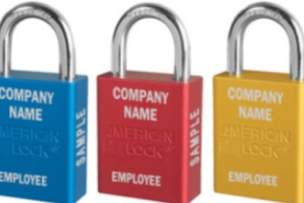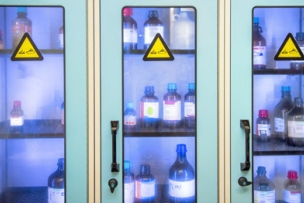Arm Protection: Why Sleeve Protectors Matter in Workplace Safety
Just as gloves protect workers’ hands from injuries like cuts, abrasions and burns, sleeve protectors shield workers’ arms.
Workplace hazards don’t end at the wrist. Just like hands, arms can be at risk as well. Sleeve protectors matter.
Gloves protect workers’ hands from injuries like cuts, burns and abrasions, as well as injuries caused by impact and even vibration. Arms, though also in danger, may be left unprotected.
“Too often, we fail to consider that arms are vulnerable to many of the same hazards that cause workers to need gloves,” says M.B. Sutherland, a senior safety writer, citing National Safety Council statistics showing that arm injuries accounted for nearly 5 percent of injuries involving days away from work in 2017 (in comparison, hand-related accidents accounted for more than 13 percent of such injuries).
Personal protective gear for arms, in the form of safety sleeves, may help prevent some of those injuries.
Workplace Safety: When to Use Sleeve Protectors for Arms
“Often workers need to reach over or under machinery, shelving or other rough materials to complete a task. So while hands may be protected with gloves, arms without proper protection are vulnerable to cuts, abrasions and burns,” Sutherland writes in OH&S. “Routine tasks such as moving items in and out of bins can become hazardous if workers have to reach into barrels or other receptacles that contain sharp materials. Even the receptacles themselves can cause injury as bins become worn over time and may have sharp, uneven edges.”
John Mazur regional manager in the Northeast for Worldwide Protective, says cut-resistant sleeves are often used in automotive plants, where workers are reaching in and out of sharp-edged chassis, as well as at glass plants and metalworking plants.
“You may have stacks of sheet metal, people reaching around or over items in their work area, so you want to make sure that the arm is completely protected,” he says. Even workers cutting metal banding on pallets may benefit from protective sleeves. “When those get cut, there’s a lot of tension on them. A lot of times those bands will really rip back.”
Sleeve protectors can do more than protect against cuts, says Sutherland.
“Chemical splash, radiant heat and hot materials can easily injure arms if your workers have only shirt sleeves, which can also gap open between wrist and elbow, or no arm covering at all.”
Protective Sleeve Types: A Wide Range for Comfort and Material
Just like gloves, the material used to make sleeves varies depending on their intended use.
Mazur says at Worldwide, form-fitting, cut-resistant protective sleeves are made out of the same material as gloves, and the fabric is tested by the same ANSI standard that measures a glove’s cut resistance, ASTM F2992-15. The yarn for the fabric is woven into a tube, which can be cut to any length. Doubled over, it becomes a two-ply product. Some sleeve protectors use Kevlar as well which can work the same way when doubled over.
A variety of materials are used to make sleeves. Cut-resistant sleeves are often made with para-aramid. Some sleeves use wicking fabrics on the inside to help keep workers cool and dry. Two-ply sleeves can also be made to be heat-resistant.
“The single ply is good for keeping your arms cool or maybe providing some cut protection, but they really aren’t going to provide a lot of heat resistance,” Mazur says.
For workers who need a higher level of protection from burns, safety managers should consider cape sleeves, which have a blousier cut and use heavier materials.
Sleeves can also be puncture-resistant, and specially designed sleeves are available for welding, for protection from arc flash, and for tasks like food preparation.
![]() Not sure what the best sleeves are for your workplace? Use this interactive product selector to help give you the best options.
Not sure what the best sleeves are for your workplace? Use this interactive product selector to help give you the best options.
Cost and Compliance for Arm Protection
Are sleeves the best option for your facility? Mazur says a facility’s safety manager will be the best judge.
“They know where their recordables are,” says Mazur. “If they have a lot of wrist injuries or forearm injuries or biceps, upper arms, but they aren’t having any injuries in the body area, you can get away with wearing just a sleeve.”
Another factor to consider is cost. There are a variety of personal protective equipment (PPE) options to consider—in addition to sleeves, there are jackets, aprons, chaps and other protective items.
“A pair of cut-resistant sleeves is a fraction of the cost of an average cut-resistant shirt or jacket,” says Sutherland. “If the hazard extends only to a worker’s elbow or shoulder, it’s possible you can save money and increase comfort and compliance with a simple pair of sleeves.”
Compliance—ensuring workers use the PPE recommended for a task—is another issue. Sleeves may be more comfortable than other PPE options, but that doesn’t mean workers will always be willing to wear them.
Mazur says clients sometimes request sleeves that are made as an extension of a glove, so workers wearing one have to wear the other. He advises against this.
“The problem is the glove will wear out much faster than the sleeve will,” he says. “Then you have to throw out the whole thing—you’re throwing out the sleeve and the glove versus just replacing the glove.”
Choosing the Right Arm Protection and Sleeves Workers Will Wear
When selecting sleeves, Mazur says there are a wide variety of features to consider, including:
Color
Mazur says workers often throw out or refuse to wear sleeves that look dirty, so choosing a color that hides the dirt may help reduce the number of sleeves a plant needs.
Length
Woven sleeves come in custom lengths.
Fastening
How do woven sleeves stay up? Are they attached to a worker’s sleeve with a clip? Tightened on the arm with a Velcro strap? Or held on with an elastic band?
Thumbholes
Thumbholes at the bottom end of a sleeve help keep a sleeve in place under gloves.
“So if you’re reaching outward and hit the corner of sheet metal or glass, you don’t want it to be able to run up under that sleeve,” Mazur says. This feature can also provide added protection for palms, he says, where a lot of cuts occur.
How do you use sleeve protectors in your facility?





Talk to Us!
Any info on sleeves we can get for my husband whom works with coolants at work every day. He's arms look like they are getting burnt. Please... any suggestions would be helpful.
114Hi Michele,
We would need more information to suggest a sleeve for you. Please reply with the name of the coolant and SDS if you are able. Thanks.
117can you suggest me the best material suits and apron ppe for prevent hot water splash ? thank you
94Hello fatin,
The best way to prevent injury from hot water splashes is to prevent the splash from occurring or to separate the worker from the splash. When this is not feasible or there is still some residual risk of hot water splash, then PPE can be helpful.
With regards to hot water, we would need additional information to recommend the proper PPE material, such as the temperature of the water, the volume of the splash, the frequency of the splash and what part of the body is being splashed. I will reach out to one of our supplier partners who can give you some information on the types of material that are available.
You can also contact your MSC Account Manager or call 800-645-7270 to be connected with someone that will be able to help you select and source the right protective equipment to keep you safe.
28Fatin,
I supply MSC with KleenGuard disposable apparel. If you want to reach out to me, I would like to learn more about your application to help recommend a solution. You can email or call me direct at 770-658-7722.
20Basically, our production are food products. So, we cannot avoid the hot water area. Temperature of hot water 180F, volume of splash did not have exact volume but with high temperature even a bit of hot water can give effect scalding. the frequency is very high since employees are working in cooking area. Most body part are hand area.
34I have 20 in arms...and can't find cut resistant sleeves that will stay up..and with stand use.
13Leave a reply
Your email address will not be published. Required fields are marked *